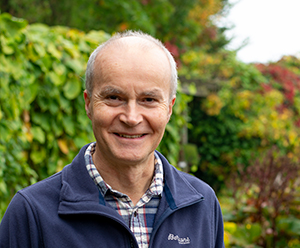Facts:
Before a biological control agent may be used, it must undergo rigorous security checks to ensure that it does not cause negative side-effects on humans or in the environment.

It is important to ensure that biological control does not result in unacceptable side-effects on humans or in the environment in a wide sense. We therefore develop and present new strategies and methodology for assessing safety of biocontrol agents.
Some forms of biological control are regulated according to law and safety assessment is therefore intimately connected with prevailing regulatory conditions.
We develop and use strain- and group-specific genetic markers in combination with real-time PCR methods to look at the fate in the environment of biocontrol agents. One example is a seed-applied Pseudomonas bacterium that can control snow mould in cereal production, where we have used the new method to describe how the beneficial bacterium colonises the growing plant.
In another project, we have developed molecular tools for studying the fundamental ecology of the biological insecticide Bacillus thuringiensis subsp. israelensis (Bti). Using these tools, we saw that repeated spreading of Bti to control floodwater mosquito larvae can induce limited and probably transient changes in communities of this bacterial group in periodically flooded riverine wetlands. The field work took place in the lower River Dalälven region of Sweden, where Bti products have been used for more than 15 years to control massive populations of mosquito larvae.
Our activities and have resulted in suggestions for new principles of safety evaluations, more in level with actual risks of biological control. One ongoing study will propose new data requirements and criteria, which can lead to more relevant and efficient assessment of the potential of microorganisms for producing toxic metabolites.
We also regularly provide expert counselling to a number of Swedish authorities, stakeholder organisations and companies. At international level CBC participates in expert groups at EFSA (European Food Safety Authority), e.g. the scientific panel for plant protection products (PPR panel, 2012-2018) and the working group for updates of the QPS (Qualified Presumption of Safety) list of comparatively safe microorganisms.
Another commitment is the participation in the expert group for “Biopesticides” at the EU Commission, that, e.g., develops new criteria for plant protection products with low risk and new data requirements for approvals of microbial pest control agents.
In the EU-project EcoStack, we are part of a European consortium that proposes new strategies and simpler and more uniform rules for how ecosystem services can be managed for optimization of crop production as well as protection from pests and diseases. More efficient use of biological methods can lead to decreased application of chemical fertilisers and pesticides, to the benefit of both humans and the environment.
The work in EcoStack has led to publications with proposals for how EU´s regulatory policy for plant-beneficial microorganisms can be improved.
We have investigated new methods for ensuring that new microbial agents for biological control are safe to humans. In one project, we focused on screening for toxin production in fungi, by determining effects of extracts or culture filtrates from the fungi in laboratory bioassays with the unicellular ciliate Tetrahymena pyriformis.
Before a biological control agent may be used, it must undergo rigorous security checks to ensure that it does not cause negative side-effects on humans or in the environment.
 Ingvar Sundh
Ingvar SundhProfessor at the Department of Molecular Sciences
018-673208
ingvar.sundh@slu.se
CV-page